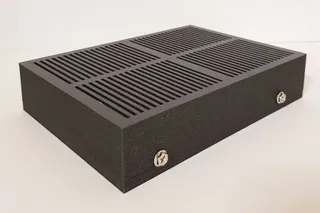MUJI Drybox - with LED humidity indicator
Description
PDFBased on A4 storage box from 無印良品.
https://www.muji.com/jp/ja/store/cmdty/detail/4550002555702
Each box contains a digital pressure/temperature/moisture meter (BME280), an RGB LED (PL9823), and a DB9 connector for a straight-rs232 cable.
Sensor can be bought on Amazon.
LEDs in Akidzuki Denshi (in akihabara).
Cheap DB9 cables and connectors in Marutsu (also akihabara).
Connection box, mounted at the back of the printer, allows connecting up to 8 boxes to a Raspberry PI (e.g. the octopi driving your printer).
I used cables instead of wireless connection to avoid having to replace batteries every few months.
The boxes are not easy to open and close. You'll likely have to seal them with transparent tape, too. And the top covers are likely to fracture during closing. Basically, those top covers suck. I can't really recommend using them. If you have any other idea how to seal those boxes - go for it, and share.
Software for driving the LEDs from raspi is available here:
https://gitlab.com/yunta/pl9823 - LEDs control tool
https://gitlab.com/yunta/dry-box-example - example script to color leds based on humidity
Print instructions
I did not upload any gcode for the top covers, because every box is slightly different. Measure walls' thickness with a caliper, or something, and update the openscad files separately for every box you bought. Then slice as you like it. Supports are only needed for the "base" and "plug-box" parts (or maybe not, I haven't tried printing them without supports). Infill is irrelevant, I think.
Tags
Model origin
The author hasn't provided the model origin yet.

